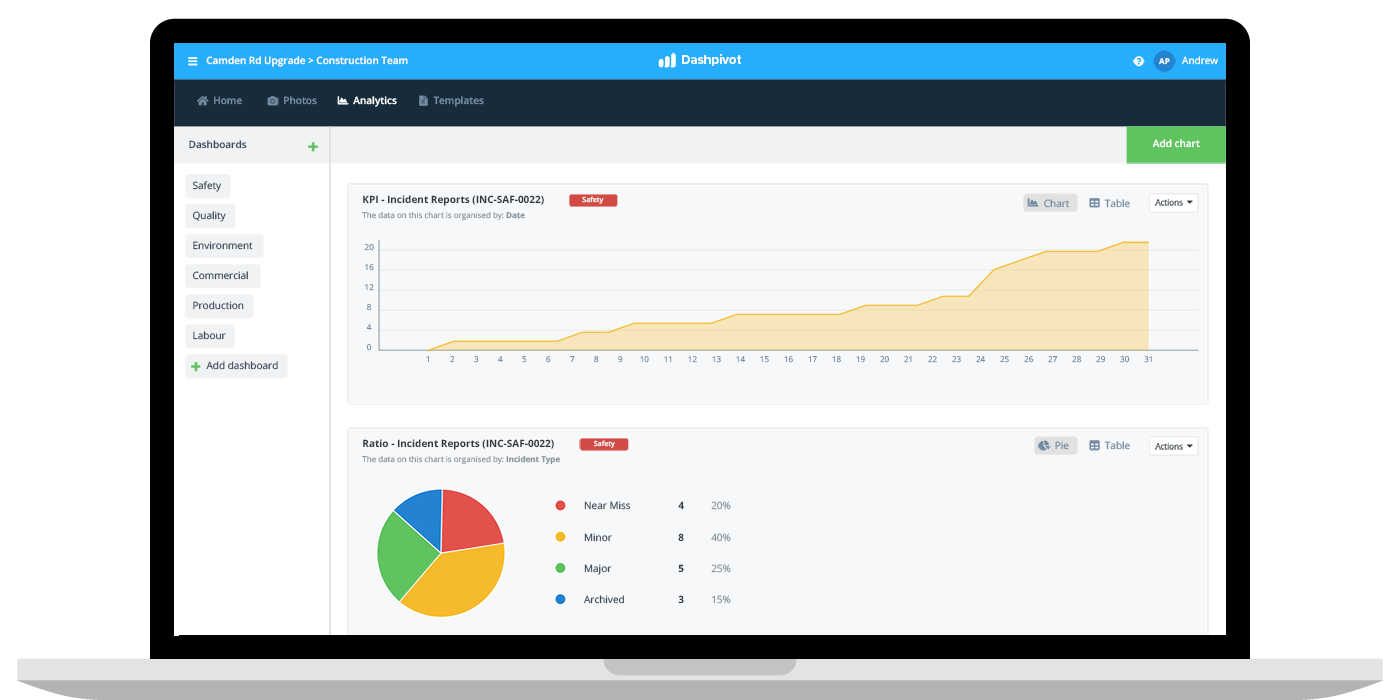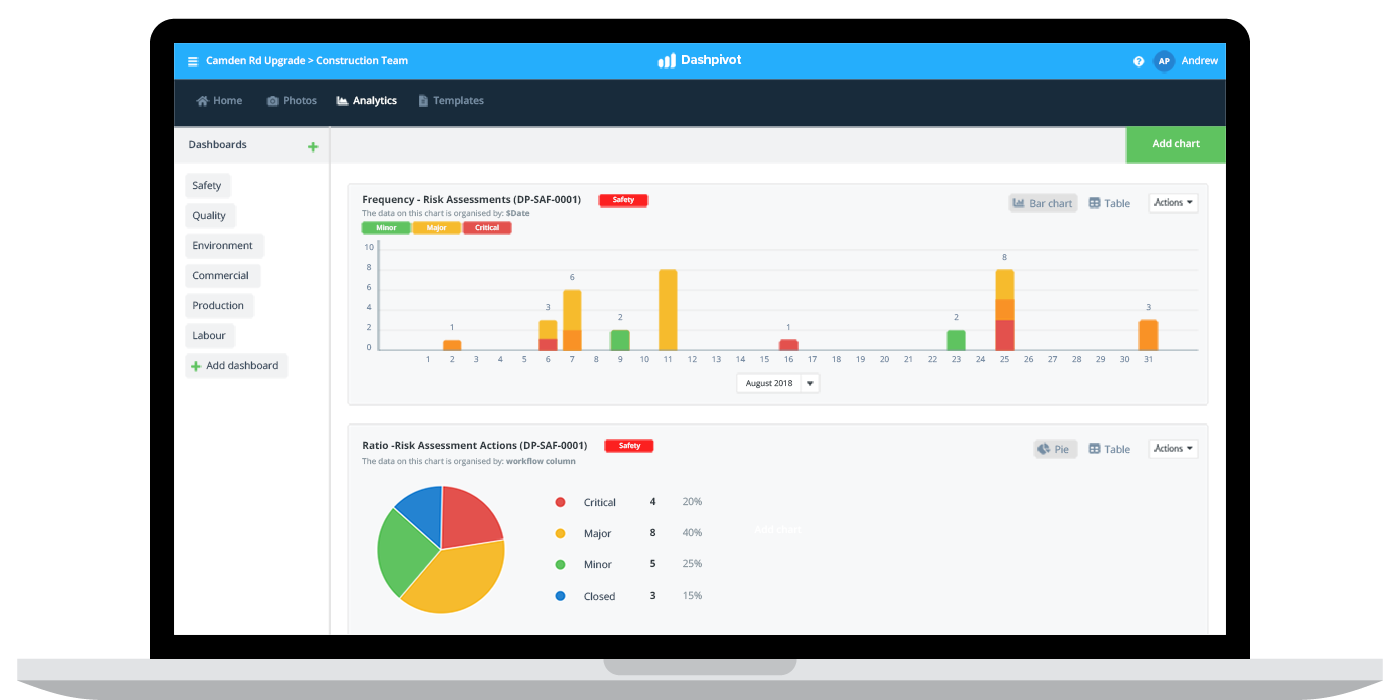Safety – TRIFR Total recordable injury frequency rate

TRIFR - Total recordable injury frequency rate: Here's what you need to know
What is TRIFR?
TRIFR or the total recordable injury frequency rate is the number of fatalities, lost time injuries, substitute work and other injuries requiring treatment by a medical professional per million hours worked.
TRIFR can sometimes be used interchangeably with the lost time injury frequency rate, but it is different in that it includes other types of injuries in addition to fatalities and lost time injuries.
TRIFR is a standard safety metric across many industries, and is one of the most common and leant on lagging safety indicators which companies, auditors and authorities use to measure safety performance.

TRIFR scores
One of the most common use cases for TRIFR scores is that companies and projects can benchmark their scores against similar companies and projects to get a better idea as to how they are performing relative to others.
While it's more important to use the TRIFR to make progress on one's own performance, it can certainly be helpful to see where the company or project sits in comparison to others (and this is what external auditors will be looking at for red flags and their own prioritisation).
One of the industries where the total recordable injury frequency rate is most important is in construction.
To get a good idea of the TRIFR's in the construction industry, the Australian Government has collected some great data on injury frequency rates across different construction sectors.
Construction is generally one of the more dangerous industries and 'workplaces', so these TRIFR scores may be higher than yours if you're coming from more professional service sectors.
The two tables below show the Governments' findings between the companies who were enrolled in a formal WHS scheme and those who weren't.
In the TRIFR scheme:
| Residential construction | Civil construction | Commercial construction | 'All' construction verticals | |
|---|---|---|---|---|
| Mean | 0.47 | 4.71 | 15.36 | 9.15 |
| Median | 0 | 0 | 0 | 0 |
Not in the TRIFR scheme:
| Residential construction | Civil construction | Commercial construction | 'All' construction verticals | |
|---|---|---|---|---|
| Mean | 20.89 | 18.84 | 24.74 | 22.17 |
| Median | 0 | 2.17 | 9.00 | 5.74 |
To give you an idea of companies and use cases on the higher end of the total recordable injury frequency rate spectrum, In Australia, the companies with the highest TRIFR in 2017 were WesFarmers (28.3), Qantas (24.7) and Star Entertainment Group (22.9).
On the other end of the spectrum, some companies had a perfect 0 TRIFR, while WorleyParsons (0.4), Transurban Group (1.0) and AGL Energy (2.0) show some really low scores.
As you can see by the above tables, construction companies are on the higher end of the spectrum.
But what it also exhibits is how proactive and conscious WHS programs and safety measures can impact TRIFR numbers, and brought civil construction and residential construction numbers way below the typical average.
Companies today talk about Zero Harm policies and programs. These programs are intended to drive these TRIFR numbers down to zero.
How to better measure your total recordable injury frequency rate
Recent research found that all but 13 of the companies listed on Australia's stock exchange now report safety statistics including TRIFR.
About 70% of companies in the report said they now tie safety performance to executive numeration, with this seemingly increasing every year. Today, investors and other stakeholders expect safety to be a key KPI across the business.
So how are these companies measuring and analysing their total recordable injury frequency rates?
For office-based companies, these numbers are relatively easy to obtain. An employee will file an incident or injury report, and administrators will collect this information and report on the metrics at set intervals.
For project and site-based companies, things can get a little messier. Their information is being fed in from multiple locations, involves employees, contractors and subcontractors, and injuries can stem from more factors.
While some industrial companies still use paper-based forms and PDFs to file injury reports, others are taking advantage of systems built to streamline this reporting process.
A system like Dashpivot enables these companies to funnel all of their safety data in from the field into a consolidated dashboard, where they can see their safety metrics and performance in real-time.
From here, it's easy for them to sum recordable injuries, and see the TRIFR.
There's no right or wrong way to report on TRIFR from a process perspective, but there are certainly more efficient ways to manage the process than others.
And the most important part of your measurement process and procedure is that it is accurate - which feeds into the strength and weaknesses of total recordable injury frequency rate topic below.

Improve how you manage TRIFR with a smarter safety management system.
The strengths and weaknesses of TRIFR
The adoption of TRIFR as a core safety metric has been a net positive. Safety has become an increasingly important part of business performance in recent years, and these types of measurements enable companies to set goals for specific numbers and create policies and procedures to hit those goals.
What gets measured gets improved, and this is true for these safety numbers. TRIFR and other metrics have been trending down in recent years and hopefully that trend will continue.
But although generally positive, there are also some tangible weaknesses in TRIFR as a measurement which companies, workers and authorities need to be aware of when assessing their safety performance, and when planning to improve it.
The major weakness is that TRIFR is a lagging indicator, and so has no predictive value for a specific project or year ahead. TRIFR looks back at the previous measurement period to derive a number, but that year may have been quiet, or certain projects may have been safer than normal.
This could lull a company into a false sense of achievement, which can quickly backfire.
As an example, some of the world's largest workplace incidents have come hot on the heels of a series of years of great TRFR numbers.
While looking at total recordable injury frequency rates is important, it should be looked at alongside leading indicators as well - which depict how safety is being managed today and tomorrow.
There's also the fact that companies can massage the TRIFR number and make it look better than it actually is. Many of these numbers are self-reported, and while companies can be investigated and audited, the numbers are not bulletproof.
You should certainly track and care about your total recordable injury frequency rate, but you should use it as it was intended - to be an indicator of safety performance.
Taking these objective measures, making sure they are as accurate as possible, and then using them as information to inform your safety processes and practices today is a great way to improve safety performance - which is the goal of all of this safety activity and measurement.